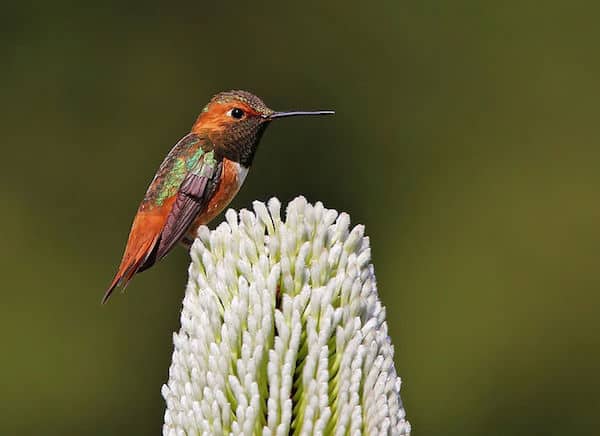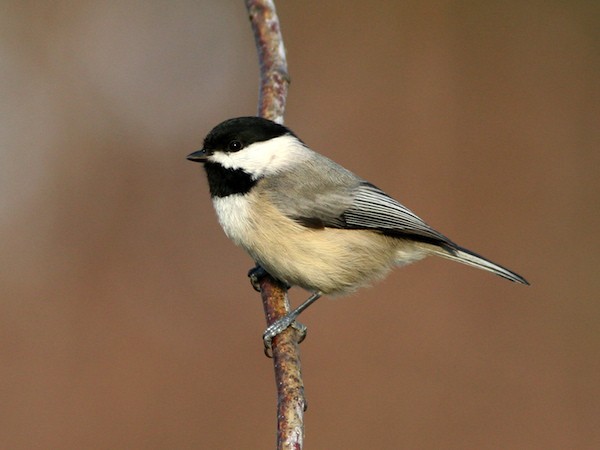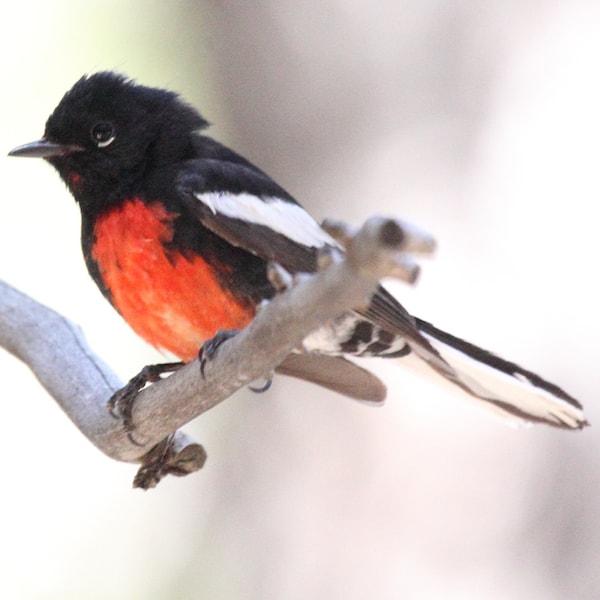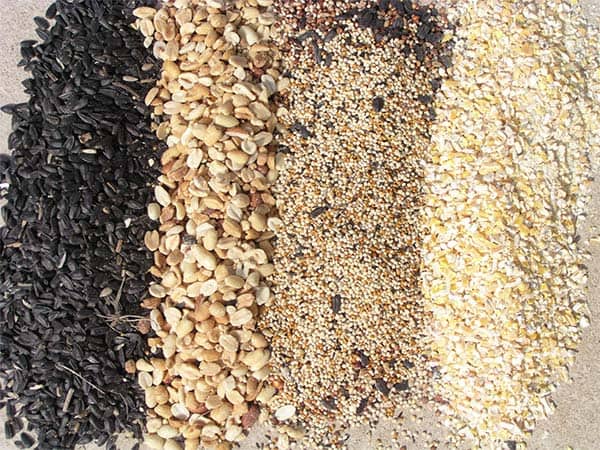In the southern part of the range, breeding begins in mid-November to take advantage of winter showers that bring western wildflowers into bloom. Males perform spectacular “J”-shaped flights punctuated by a sharp explosive sound in order to attract the attentions of potential mates.
Females choose nest sites a little distance from male territories to avoid conflict with other birds. Oaks seem to be favored, but other types of locales are sometimes selected, including roots of overturned trees.
A few will use human-made objects to hold their precious plant down and spider silk nests. Animal hairs and bits of flowers are sometimes included. The outer part of the nest is covered with mosses, bits of grass or bark, and usually lichens.
Two separate populations inhabit the narrow range. A nonmigratory subspecies lives year round in the Channel Islands and on the adjacent mainland near Los Angeles. A more northern group leaves after nesting to spend the remainder of the year in southern Mexico.




